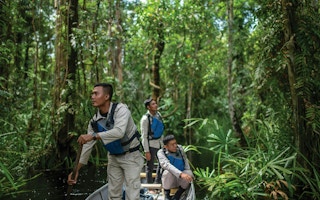Instead of being a burden, pursuing sustainability can be a boon for businesses, providing companies with a great opportunity to become more efficient and profitable.
In the resource-based manufacturing industry, Singapore-headquartered RGE, which has businesses spanning from natural fibres and edible oils that are used to produce materials that become paper, tissue, cooking oil, shampoo and clothes, has committed to a zero-deforestation policy in its operations and supply chain as well as carbon reduction initiatives throughout its group of companies.
“Through our decarbonisation efforts, we are actually saving money,” said Bey Soo Khiang, vice-chairman of RGE, citing how reducing the use of excessive energy and shifting to rely more on renewables has helped contribute to the company’s bottom line. “Reducing [waste and unnecessary energy usage] has clearly been a benefit for us in terms of improving productivity and lowering costs,” he said.
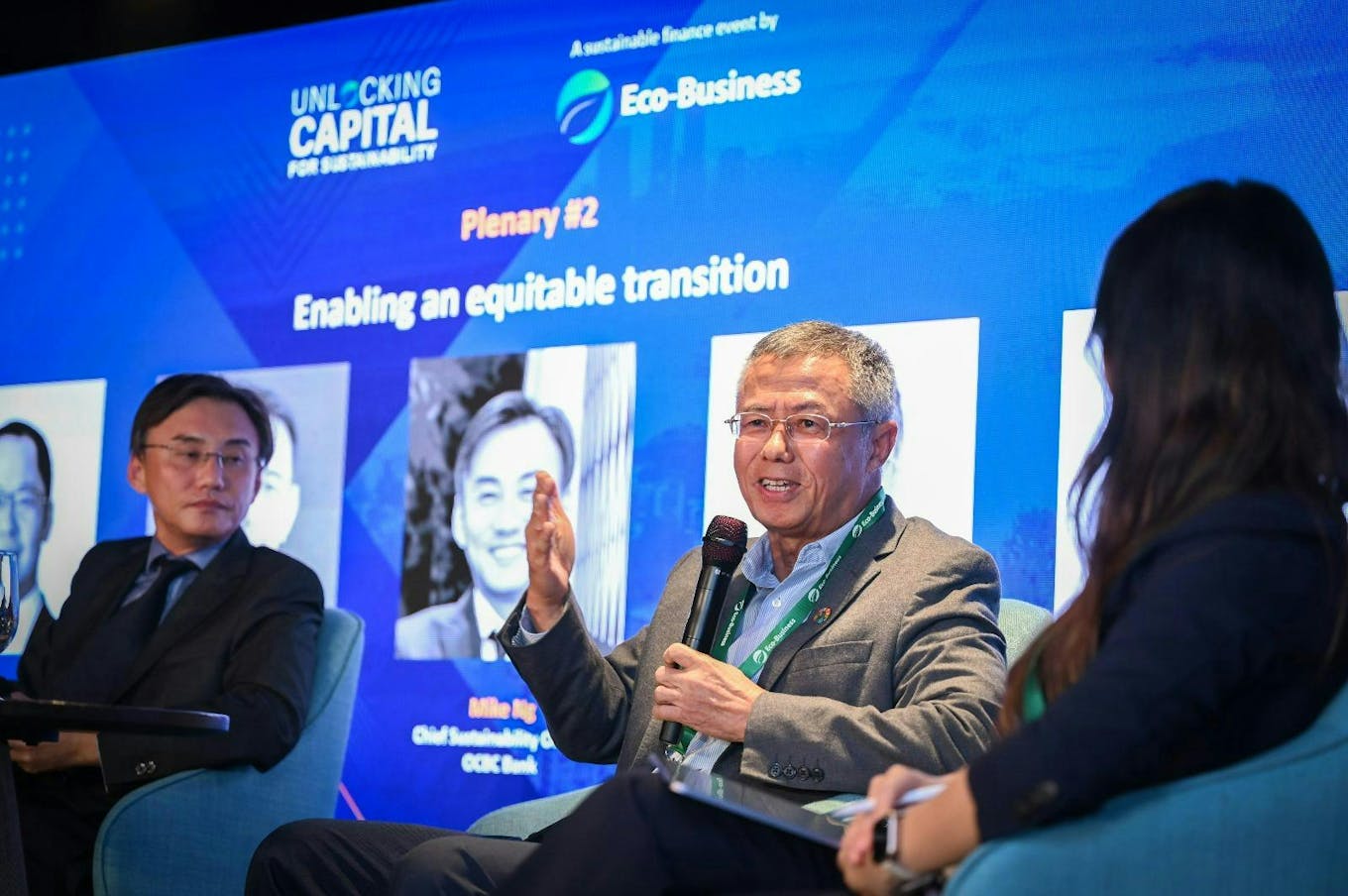
Bey Soo Khiang, vice-chariman of RGE and chairman of APRIL Group, speaking at the Unlocking Capital for Sustainabilty event organised by Eco-Business. Image: Eco-Business
Bey is also the chairman of the pulp and paper producer APRIL Group, a member of the RGE group of companies, where he advises the group’s operations on sustainability matters.
In recent years, the group has been no stranger to scrutiny from non-government organisations (NGOs) and environmental groups, which particularly seek to hold it accountable for its no-deforestation commitment.
Bey tells Eco-Business that RGE values constructive criticism and scrutiny from NGOs, even as it acknowledges challenges in immediately investigating claims and allegations given how complex its supply chain is. The Singapore lieutenant-general, who once served as the city-state’s chief of defence forces, says RGE “ground-truths” any allegations and responds with facts.
For instance, in May this year, RGE clarified its stance regarding allegations by environmental campaigners that Asia Symbol, RGE’s pulp mill in China, had been using wood from companies that had cleared large tracts of tropical rainforest in Kalimantan, Indonesia’s territory on the island of Borneo. RGE carried out further checks and immediate action was taken, updated Bey.
RGE’s recent pursuits of sustainability-linked loans (SLLs) to support its business expansion and development also means there is extra attention and scrutiny from financiers, said Bey, which the group welcomes.
In this interview, Bey shares about how the company has dealt with NGO criticisms, the thinking behind RGE’s move to secure SLLs, and what are some of the most challenging and rewarding aspects of his career at RGE.
“
It does not make business sense if we commit to a no-deforestation policy, and if we manage to achieve 98 per cent no deforestation, only to allow for two per cent of it to occur along our supply chain and corrupt the promise. We have to make sure we comply with the commitment to zero deforestation we made.

Drones are used to actively monitor plantations and forests managed by RGE. Image: RGE
Can you tell us more about RGE’s broad philosophy when it comes to financing your sustainability efforts?
RGE operates on the basis of improving lives while managing resources. We believe that doing good for the community, the country, climate and our customers will be good for the company. When investing in sustainability efforts, our thinking has to be that we are not just financing the initiatives, but actually bringing about cost savings when we pursue these efforts.
For example, RGE’s sustainability targets are structured around a few pillars, and one of them is focused on reduction – of all our factors of production including excess consumption of energy and water.
We have ‘Kaizen’ projects, or projects that look into implementing continuous improvement across our business operations, and for one week every month, the business group is on the ground at our sites looking at how we can eliminate waste. When we do that and are willing to invest in that, there are savings and the costs of production goes down, while carbon emissions can also potentially be reduced.
APRIL, a member of RGE Group, is today running on more than 80 per cent renewable energy [for its mill energy needs] and we are moving further towards renewable energy and away from coal-based operations. [The company aims to increase this figure to 90 per cent by 2030 for its manufacturing operations.]
We have calculated the payback period [for investment in the shift] and the current installation of our solar panels, which has reached 11 megawatts (MW), is something we were prepared to do, given how the estimation then was that it will just take about six to seven years for us to reap the benefits.
The payback period was knowable and we knew it would bring us forward on a path of reducing fossil fuels in our energy mix. As it turns out, electricity prices have gone up due to rising oil and gas prices and now the payback period [for solar] is easily half of what we calculated. It is another example of how we benefit from investing in sustainability.
What about your no-deforestation policies and commitment? Is there a business case to be made there?
For every licensed concession, whether peatland or soil, we operate responsibly and convert only about half of the area into plantations, while committing to conserve and restore the equivalent area. We take a landscape ecosystem approach, which means that we are constantly thinking about conservation in terms of biodiversity, water retention, community benefits, and more.
For us, this is a fairly expensive proposition. A piece of concession land could be near our mills, which means if it was converted, it can lower the cost of transport and hence the cost of production for wood. The alternative [if we were to keep it for conservation] is that we have to expand further out for production and that means higher overheads.
However, in 2015, we decided to commit to stopping deforestation. Instead, we focused on intensifying the use of our land and improving land yields through better practices such as breeding higher-yield species.
Our yield has gone up in the past few years by about 13 per cent since 2019 and we are asiming to further improve it by another 20 to 30 per cent, and this has brought down the costs of production. Hence I think necessity is the mother of invention.
When forced to do something and make a commitment, one will start thinking about alternative and better ideas, which was what happened for RGE.
APRIL has [since March last year] invested in a new paperboard packaging facility, as we now have a greater production capacity for wood and can have another product line.
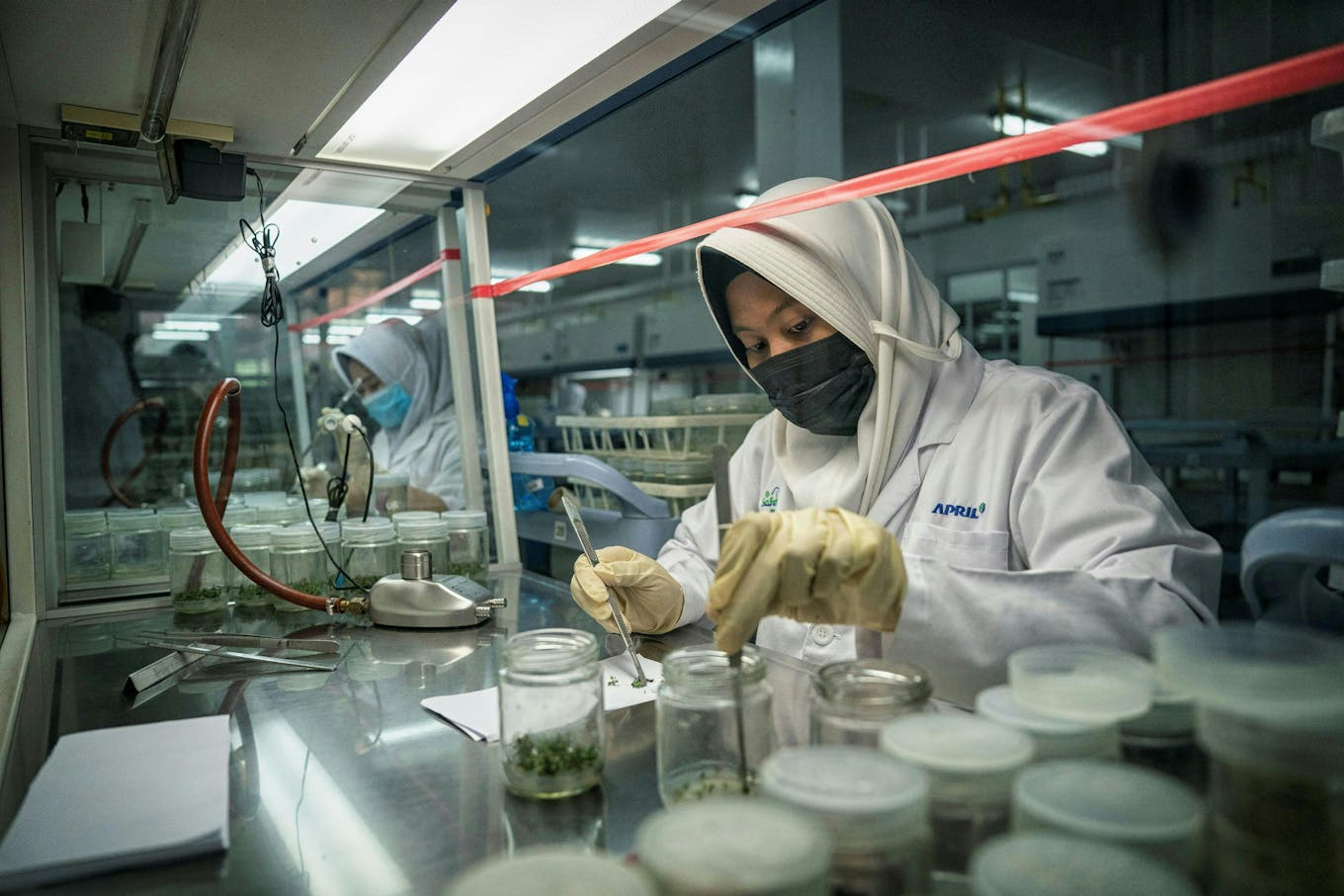
A researcher at APRIL’s tissue culture lab in Pangkalan Kerinci, Sumatra, Indonesia. The facility supports APRIL’s commitment to improve the productivity of its plantations within its existing resource capacity. Image: RGE
RGE made the news for securing some high-profile sustainability-linked loans (SLLs) and sustainability-linked derivatives (SLDs), a move described as a pivot to these relatively novel financing mechanisms. Can you share more about RGE’s thinking and approach on this?
The loan is something we can leverage on for a stronger business imperative. We have traditionally relied on self-financing for our sustainability initiatives but now that we have established detailed action plans and clearer metrics, it makes it easier for banks to come to us on SLLs.
In February this year, we closed a [US$550 million] sustainability-linked derivative with Japanese bank MUFG. We now have secured close to US$2 billion worth of SLDs and SLLs. These loans and deals are not small and they must be based on the diligence and transparency of our sustainability practices to establish trust between the banks and RGE.
Even before we secure the deals, there is a lot of discussion and the banks have questions on our sustainability initiatives. We have brought them to the ground to visit our sites, and have a look at what we do.
A high-level representative from one of our banking partners requested to sit on APRIL’s Stakeholder Advisory Committee, an independent committee composed of policy and business experts to see if all we say about sustainability is for real. We got permission from the committee chairman and he agreed to it.
“
We have traditionally relied on self-financing for our sustainability initiatives but now that we have established detailed action plans and clearer metrics, it makes it easier for banks to come to us on sustainability-linked loans.
It is hence through time and thorough assessments that we have built the relationships with the banks, for them to recognise that we are a serious player in the business. We are also very wary of and concerned about greenwashing and want to make sure that we can demonstrate real action.
RGE recently was the first foreign enterprise in China to secure a sustainability-linked syndicated loan. You mentioned RGE’s concern with greenwashing. There is scrutiny on China, for example, for having less stringent environmental, social and governance (ESG) standards. Was this a concern or consideration when evaluating if RGE was going to work with Chinese banks? What is your approach on ESG governance?
We adopt best practices, sometimes beyond what certification requires, and focus on transparency, to guard against greenwash. The stakeholder advisory committee for APRIl, for instance, also keeps us accountable.
We are happy to have anyone visit our mills and see for themselves the work we do. We don’t believe that we are perfect or superior, but we believe we are trying to do our best. There will be areas of deficiency which we accept and we take on comments on how to improve. This includes any banks that want to work with us. We have absolutely no issue with letting them come and inspect what we do.
We are used to the scrutiny – from forestry and social policy experts and others. We faced that even before SLLs came about. I also welcome the scrutiny because it will put more pressure on our people working in the operational units. They now have to meet the stated targets and we will face material financial impact if they don’t.
To address your question on ESG governance in China, I believe we can help to uplift sustainability standards and practices among Chinese companies by sharing our good practices, since climate change is a problem for all to solve.
RGE has faced negative press when it comes to scrutiny of deforestation practices along your supply chain. More recently, a report from a non-government organisation (NGO) called out RGE for its links to deforestation, including identifying how RGE-owned Asia Symbol as being connected to the clearance of a prime orangutan habitat in Central Kalimantan, Indonesia. We understand that RGE has refuted the allegations, but can you share broadly on how RGE deals with such NGO criticism?
We welcome NGO criticism or any constructive criticism, particularly those holding us accountable to our no-deforestation commitment. What we do is we attempt to “ground-truth” what they say and there are many ways to investigate the allegations to see if they are accurate.
However, it also needs to be understood that our concessions in Indonesia are about 12 times the size of Singapore. They are in disparate patches, so even though we have people working on the ground, more legwork needs to be done before we can verify things.
I’ve spent time in the Singapore Armed Forces and I’m also familiar with how instructions from the top can be misinterpreted when they get to the soldier on the ground, and in that sense, we are not perfect because of the scale of our operations. But if indeed our people have done wrong, we will correct it. Many of the older allegations have been investigated and facts have been put across the table.
In the latest episode which involves allegations that point to Asia Symbol’s pulp and paper mill in the Chinese coastal city of Rizhao receiving wood from deforested forests in Kalimantan, we investigated and found that as Asia Symbol does not have their own plantation, they hired a sourcing agent to buy wood chip from all over the world.
We took immediate action and, as we said at the time, Asia Symbol instructed its agent to suspend sourcing indefinitely from any suppliers who may have engaged in activities that are not aligned with our sustainability commitments.
We are serious about it because it does not make business sense if we commit to a no-deforestation policy, and if we manage to achieve 98 per cent no deforestation, only to allow for two per cent of it to occur along our supply chain and corrupt the promise. We have to make sure we comply with the commitment to zero deforestation we made in 2015. Then we can leverage on it as brand equity to sell our products downstream, especially with the European Union being quite aggressive with its deforestation policy.
Beyond deforestation, we also face criticism for our social policies, though sometimes I believe that the NGOs need more context before they criticise. For example, in Indonesia’s forestry sector, pulp producers like us don’t own the land. It is the government that owns the land and land claims need to be made with the government.
It might not be for us to accelerate the process the way we want. What we can do is engage a third party and help local communities establish the legitimacy of their claims before they approach the government. This would hopefully help in resolving the issue.
“
We are happy to have anyone visit our mills and see for themselves the work we do. We don’t believe that we are perfect or superior, but we believe we are trying to do our best.
A major issue that Southeast Asia needs to contend with is the haze, which is caused in part by forest fires. How is RGE addressing the haze issue?
There are several reasons why people use fires in Indonesia. One is to clear land for agriculture. Another reason is to resolve land conflicts – not an unusual phenomena in Indonesia. They burn the forest first, then plant oil palm and the issue is something the government has been dealing with. Another problem that the government has been working to enforce against is illegal encroachment of land.
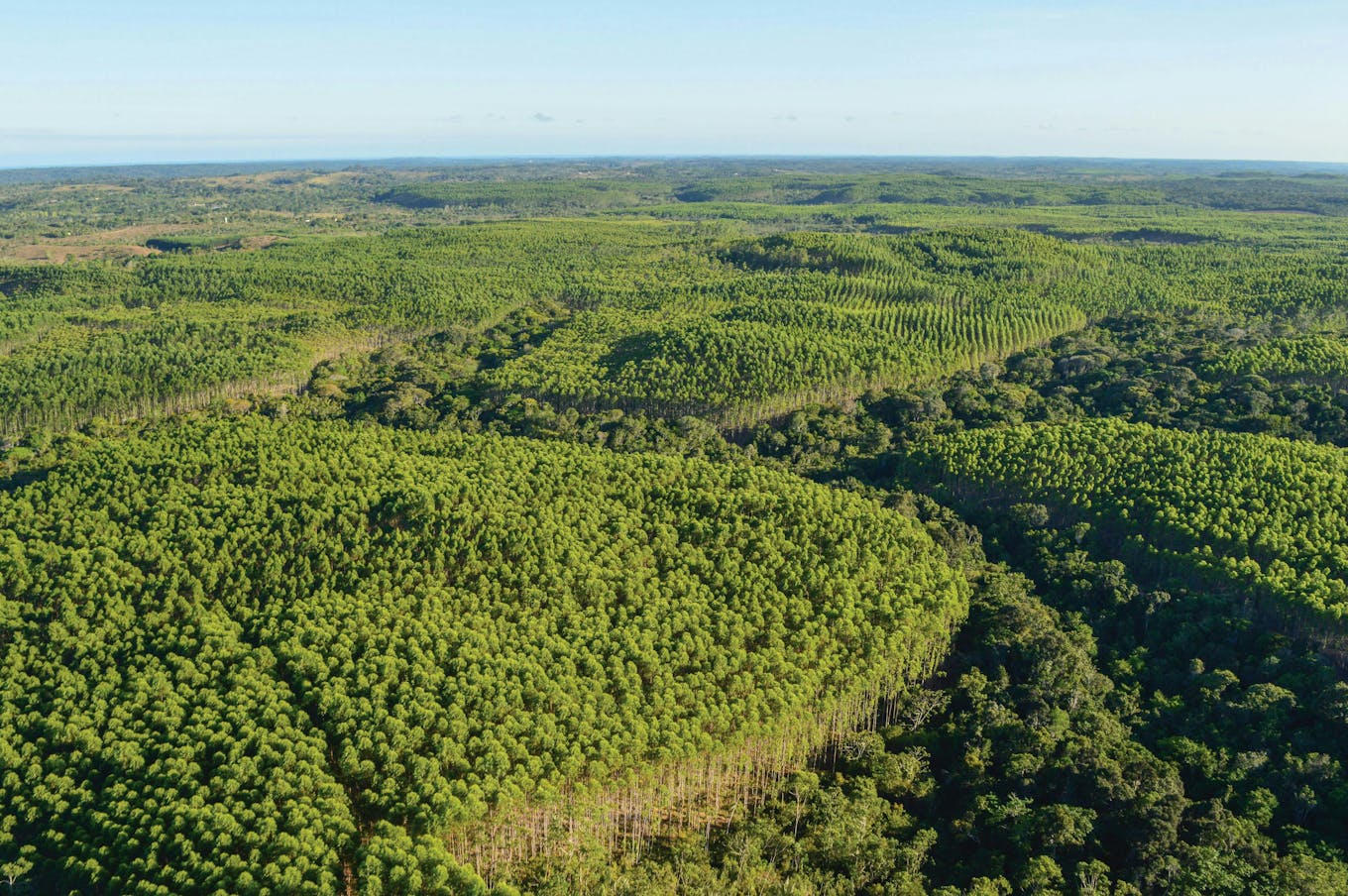
RGE adopts a production protection model to create a buffer zone for natural forests against human encroachment and illegal logging. Image: RGE
In 2013, what we have done is to start a Fire-Free Village programme, which focused on fire and haze prevention. We started with a few villages that were at high risk of starting fires, appointed a villager in each village as fireman for coordinating educational programmes in school on the health hazards of haze, as well as the responsible clearing of land, where we provided the villages with the mechanical means to do so. We also installed air quality measurement instruments to show them the impact of poor air quality.
If a village remained fire free by the end of the dry season, we would reward them with US$10,000 worth of community projects in the form of a road, bridge, mosque or other similar projects the community wanted. It is not a small sum of money, but investing in prevention will lead to less fires in future, and therefore, ensure that burning does not impact our plantations, so it makes business sense.
The programme was successful – there were no fires in any of the villages we ran this test programme on, and we have since expanded its coverage to about 900,000 hectares of land. The areas burnt have been reduced by 90 per cent. More importantly, there has been a mindset change among the villages – they are now beginning to realise that using fires is not the correct way to clear land.
Are there other newer sustainability initiatives that RGE has embarked on in recent years?
To meet consumer demand for raw material feedstock, another approach that we have taken is to use recycled pulp. For example, if I can safely and effectively separate and recycle original pulp from textile, ship it to our mills and add that to virgin pulp, this can become another source of feedstock we can rely on to expand our production capacity. We find that there is a business imperative to taking this circularity approach too and at the same time, it creates a very positive impact on sustainability, including reducing the need for landfills.
This is why we we have partnered with Nanyang Technological University in Singapore to establish a sustainable textile research centre as we’d like to get their help in finding a good design for an urban-fit textile recycling plant which can also be a sustainable one that hopefully uses as much renewable energy as possible, as well as fewer heavy chemicals. If textile waste can be recycled in urban settings, this could become a new business line for RGE. The technology can be patented and sold to other cities.
It has been almost 15 months since the launch of the research centre, and although it is a fairly novel approach, we have seen some success in terms of technological applicability. A key issue, however, is that there is still a cost to the process and it is not a trivial challenge.
Currently, traditional solutions are large-scale ones, where textile waste is collected at a central location and recycled at a big plant then shipped out, but that will mean transporting the pulp for a longer distance, for example all the way to Europe, and instinctively we know that the carbon footprint will be much larger.
For our project, life cycle analyses (LCAs) to assess environmental impacts associated with all the stages of the life cycle of the process are done and monitored. It is going to take time but we are encouraging the team to press on further. We will first start with a lab-scale plant, make sure it works before scaling it into a pilot.
We also made a decision to provide about S$3 million (US$2.24 million) in funding to Singapore Fashion Council that has members throughout the textile value chain, from upstream production to retailers and designers. The textile industry in Singapore needs to raise its sustainability standards, reduce its carbon footprint and our hope is that designers will one day design with sustainability in mind.
We are trying to address some of the impacts of design which are not sustainable – buttons, zips and the dye used for clothing – and a good way to do that is to raise awareness among key players, particularly among the small and medium enterprises.
What has been most rewarding and challenging in your career at RGE?
When I joined RGE, I knew next to nothing about sustainability. I joined RGE mainly because I saw how they do business – doing good for community, country, climate, customer and company (the 5Cs). It was a different way of doing business compared to other companies 13 years ago.
At that time the palm oil and forestry industry was under tremendous pressure from NGOs. We worked a lot with NGOs over the years and have improved ourselves. 2015 was a significant year for us. We made a number of commitments including our zero deforestation pledge. That same year also saw the announcement of the United Nations Sustainable Development Goals and the Paris Agreement. We worked to embed these global goals into the implementation of our ‘5Cs’ ethos of doing business.
For example, stunting [among children] is a problem in Indonesia, so one of the targets we adopted for our community was to eliminate or reduce stunting by 50 per cent. Another example is addressing poverty in Indonesia, so we made it an objective to eliminate extreme poverty in the villages up to 50km fromour area of operations.
All our businesses now have a 10-year plan towards 2030 targets in terms of decarbonisation, working with the community, nature-based solutions and circularity. These are not just targets set by senior management, but we work together with people on the ground.
So that has been a very rewarding part of my journey, from knowing nothing about sustainability and having a defensive approach in responding to NGOs to now being able to take a proactive approach towards sustainability.
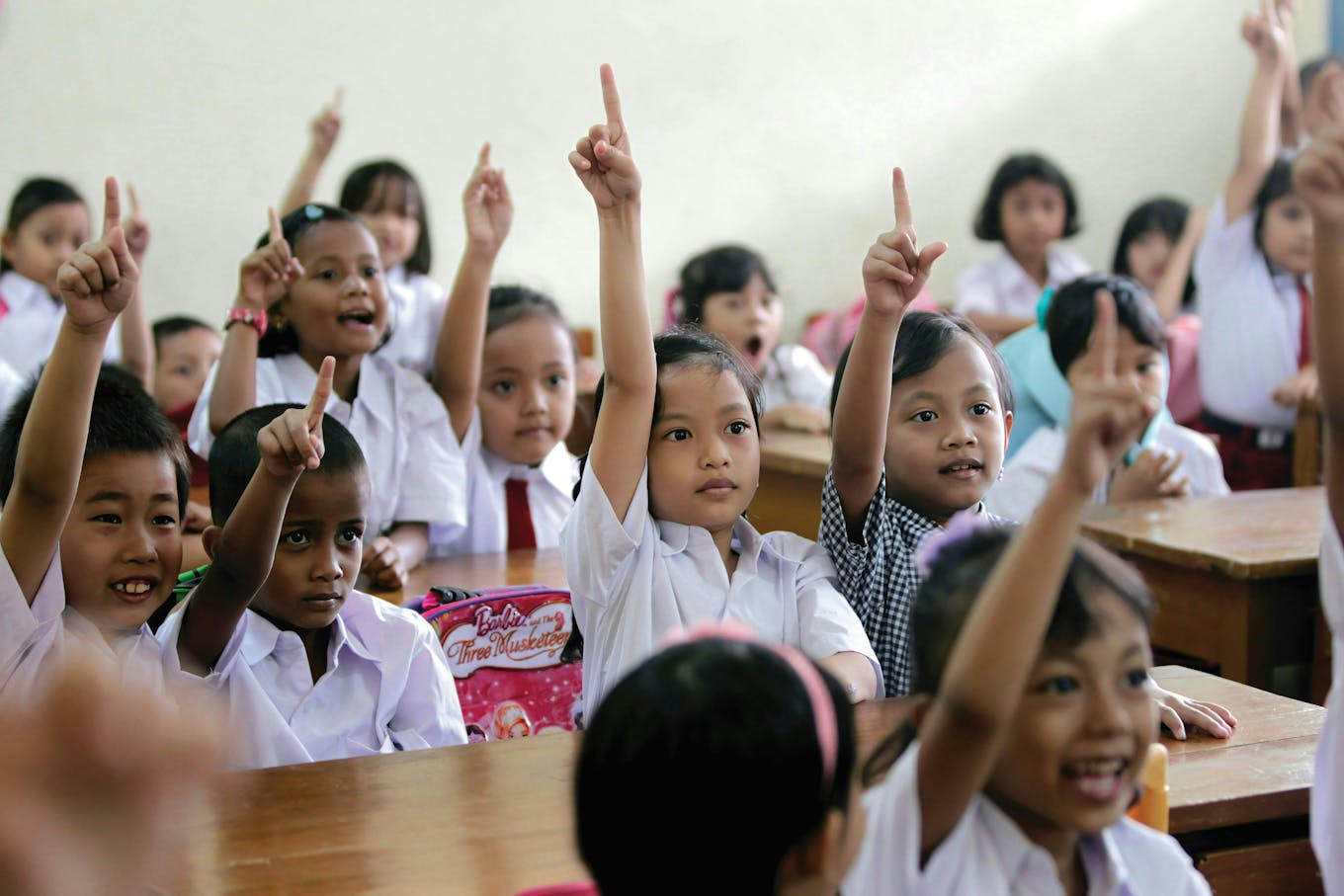
RGE as well as its founder Sukanto Tanoto has been supporting the Indonesian government’s priority to reduce stunting prevalence in children. Image: RGE
Looking beyond 2030, if you were to highlight one area where it will be important for RGE to make progress on in sustainability efforts, what would that be?
Technology, including the capability to produce hydrogen and ammonia sustainably, will be key. At RGE, we are monitoring these developments and we want to work with companies to deliver renewable energy.
We are supposed to be on a trajectory to make sure that global temperatures are below 1.5 degrees Celsius but we are now in crisis mode in terms of achieving this, so we need to consider all realistic options.
The interview has been edited for brevity and clarity.

